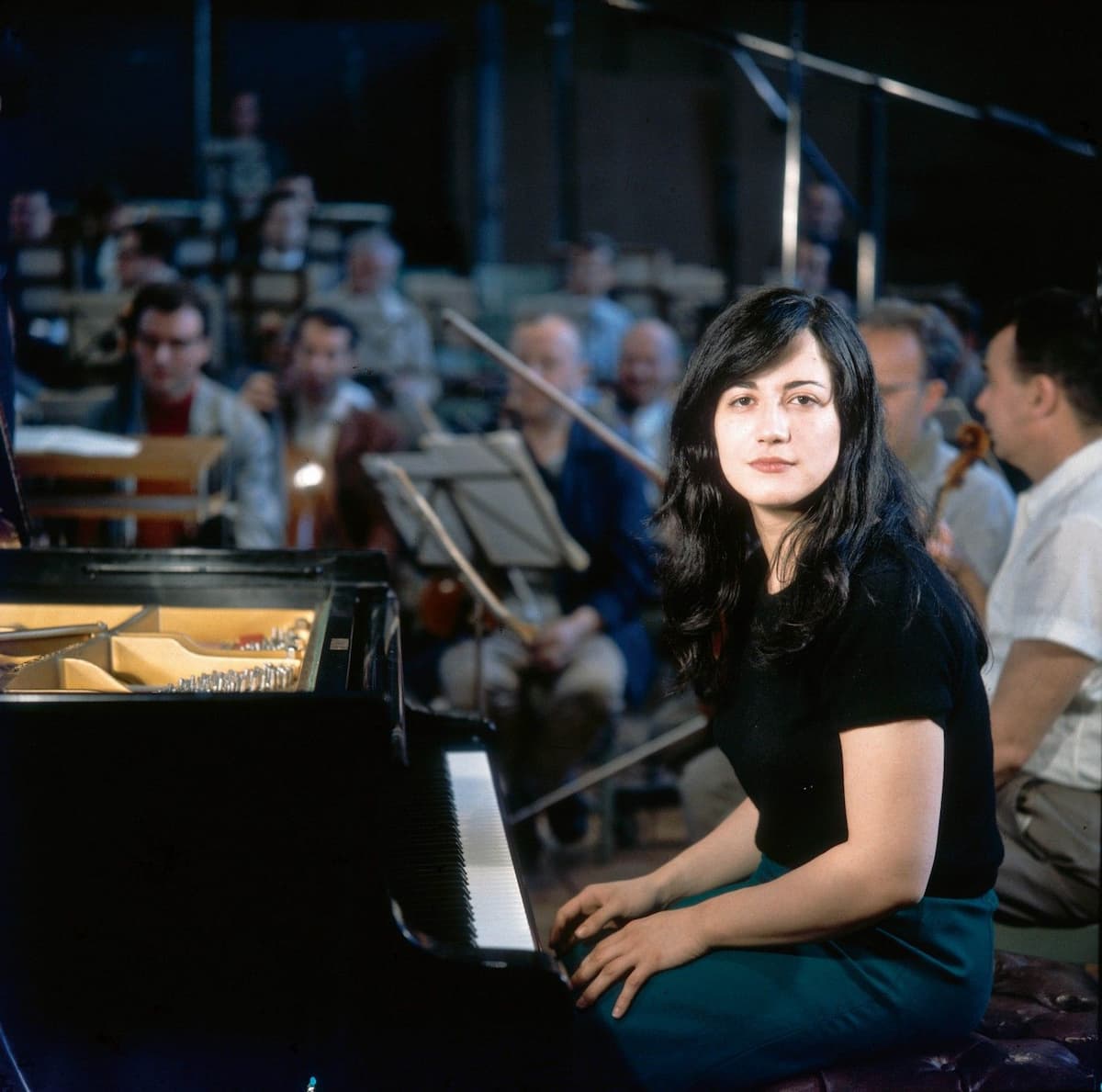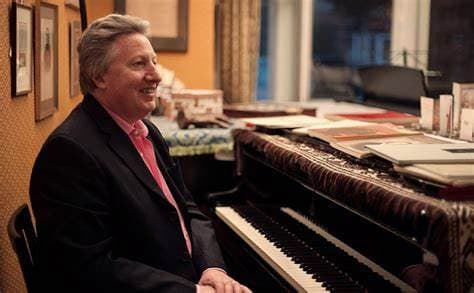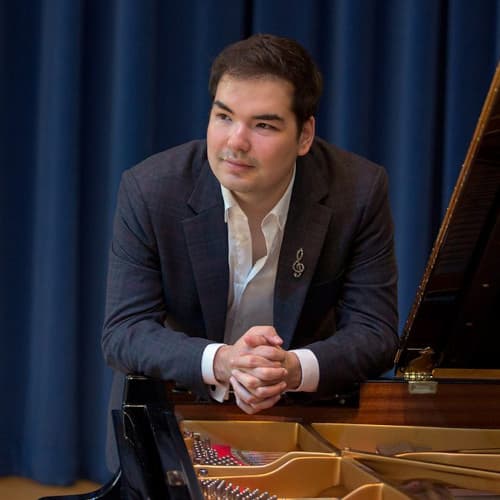It's all about the classical music composers and their works from the last 400 years and much more about music. Hier erfahren Sie alles über die klassischen Komponisten und ihre Meisterwerke der letzten vierhundert Jahre und vieles mehr über Klassische Musik.
Total Pageviews
Wednesday, October 8, 2025
🌸 𝘽𝙄𝙉𝙄 𝙩𝙤 𝙝𝙚𝙖𝙙𝙡𝙞𝙣𝙚 𝘼𝙪𝙧𝙤𝙧𝙖 𝙈𝙪𝙨𝙞𝙘 𝙁𝙚𝙨𝙩𝙞𝙫𝙖𝙡 𝘿𝙖𝙫𝙖𝙤! 🎈
Monday, October 6, 2025
Love is in the Air - Gimnazija Kranj Symphony Orchestra
Tomaso Albinoni - Adagio (best live version) Copernicus Chamber Orchestr...
FSO 2015 Oficial | The Bridge on the River Kwai (K. J. Alford)
Love is in the Air - Gimnazija Kranj Symphony Orchestra
Friday, October 3, 2025
A Question of Virtuosity: Michel Dalberto’s Virtus
by Maureen Buja

Michel Dalberto
In his new album, Dalberto shows us the differing possibilities of virtuosity through the 19th century. He opens with what has become the basic definition of virtuoso: Franz Liszt’s concert paraphrase of a waltz from Gounod’s Faust (S. 407). Starting with the basic theme, Liszt then adds the emphasis and techniques that only he is capable of to create a virtuoso performance.
As a complete change of pace, this is followed by Mozart’s Piano Sonata No. 15 in C major, K. 545, which carries the name of the Simple Sonata or Sonata facile. This demonstrates virtuosity in another way: Mozart’s ability to create transparent and seemingly simple work, but which, by its very simplicity, speaks of his virtuosity as a composer.
The next work, Brahms’ Variations on a Theme of Paganini, Op. 35 returns us to the idea of the virtuoso performer, but now matched with a virtuoso composer. Written by Brahms for the virtuoso pianist Carl Tausig, it’s a triple hit, since the original theme was by the violin virtuoso Niccolò Paganini. Described variously as ‘fiendish’ and ‘one of the most difficult works in the literature’, and ‘diabolical’. Even Clara Schumann nicknamed them the ‘Witch’s Variations’.
Dalberto plays both books 1 and 2, but joins them in a unique manner. Each book, as written, starts with a statement of Paganini’s theme and then goes into a complete set of 14 variations. Dalberto chooses to play Book 1 through Variation 12, then goes directly to Book 2, Variation 1, skipping the restatement of the theme. This is not unusual, and when the Books are being played back-to-back as they are here, the omission of the restatement of the theme is not unique.
At the end of Book 2, he plays Variation 13, then Variation 13 of Book 1, and closes with Variation 14 from Book 1. He omits Book 2, Variation 14, entirely. He doesn’t explain this decision, but perhaps considers the final Variation of Book 1 a more definitive ending.
Franz Liszt’s Réminiscences de Norma (after Bellini’s opera), S.394, follows, bringing us yet another example of virtuosos creating their own versions of music that everyone knew.
Franz Liszt: Réminiscences de Norma (after Bellini’s opera), S.394
The last virtuoso piece was somewhat of a surprise. We’re familiar with all of Liszt’s versions of Schubert songs, but this is one by Sergei Rachmaninoff. His piano transcription of Wohin? from Schubert’s Die schöne Müllerin is a curious amalgam of Schubert’s original song with extra colouration. Rachmaninoff did some 14 transcriptions, ranging from Fritz Kreisler’s Liebesleid and Liebesfreud to Bach’s Violin Partita in E major, but this Schubert work is unique.
The playing is top-notch, if some of the decisions, particularly about the Brahms, are inexplicable. Virtuoso music in the hands of a virtuoso performer is always impressive.

Michel Dalberto: Virtus
La dolce volta LDV148
Release date: 14 March 2025
Official Website
For more of the best in classical music, sign up for our E-Newsletter
Pianists and Their Composers: Franz Liszt
by Frances Wilson

3D rendering of Franz Liszt by Hadi Karimi
In fact, he was a remarkable musician and human being. Sure, as a performer he could be flamboyant and extravagant in his gestures, but he helped shape the modern solo piano concert as we know it today and he also brought a great deal of music to the public realm through his transcriptions (he transcribed Beethoven’s symphonies for solo piano, thus making this repertoire accessible to both concert artists and amateur pianists to play at home). He was an advocate of new music and up-and-coming composers and lent his generous support to people like Richard Wagner (who married Liszt’s daughter Cosima).
His piano music combines technical virtuosity and emotional depth. It’s true that some of his output is showy – all virtuosic flourishes for the sake of virtuosity – but his suites such as the Années de Pèlerinage or the Transcendental Etudes, and his transcriptions of Schubert songs demonstrate the absolute apogee of art, poetry, and beauty combined.
Martha Argerich

Martha Argerich
Martha Argerich brings fire and fluency to her interpretations, underpinned by a remarkable technical assuredness. Her 1972 recording of the B-minor Sonata and Hungarian Rhapsody No. 6 is regarded as “legendary”.
Leslie Howard

Leslie Howard
Australian Leslie Howard is the only pianist to have recorded the solo piano music of Liszt, a project which includes some 300 premiere recordings, and he is rightly regarded as a specialist of this repertoire who has brought much of Liszt’s lesser-known music to the fore.
Lazar Berman

Lazar Berman
Berman’s 1977 recording of the Années de Pèlerinage remains the benchmark recording of this repertoire for many. Berman brings sensibility and grandeur, warm-heartedness, and mastery to this remarkable set of pieces.
Alim Beisembayev

Alim Beisembayev
Winner of the 2021 Leeds International Piano Competition, the young Armenian pianist Alim Beisembayev’s debut recording of the complete Transcendental Etudes is remarkable for its spellbinding polish, precision, and musical maturity, all supported by superb technique.
Yuja Wang

Yuja Wang
Yuja Wang has been praised for her breath-taking interpretations of Liszt’s First Piano Concerto which combine force and filigree, emotional depth, and technical mastery to create thrilling and insightful performances.
